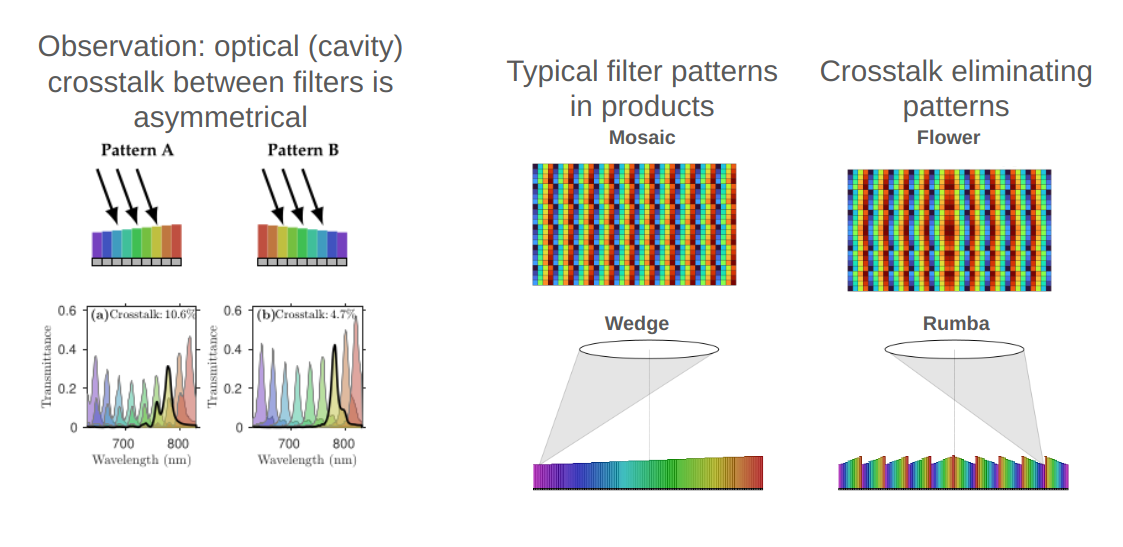Docket #: S22-135
Eliminating Crosstalk by Rearranging Patterned Thin-Film Filters on Image Sensor
A Stanford researcher has developed a simple hardware solution to eliminate a newly identified form of optical 'crosstalk' on image sensors. Three types of crosstalk are commonly identified in image sensors: electrical (diffusing electrons), optical (light arriving at the wrong pixel) and spectral (poor filtering). All three forms of crosstalk reduce spatial and/or spectral resolution, which lowers the commercial value of the camera.
This Stanford innovation addresses a newly identified form of optical crosstalk, unique to image sensors with patterned thin-film filters. The researcher discovered that cavity crosstalk occurs because the filters are made with highly reflective mirrors, which can trap and transport light to neighbouring pixels. The novel, low-cost hardware solution he developed eliminates this crosstalk by rearranging the patterned thin-film filters. The two main applications for this work are spectral imaging and miniature spectrometers.
Figure:

Image from Inventor
Stage of Development – Proof of Concept
Applications
- Spectral imaging – improving sensor performance and enhancing adoption across domains (e.g., precision agriculture, quality control, medical imaging and diagnostics, etc.)
- Miniature spectrometers – which are currently being integrated in smartphones and other diagnostic devices.
Advantages
- Low cost, easily implemented solution
- Root cause resolution of crosstalk in patterned thin-film filters
Publications
- Goossens, T. (2022). "Crosstalk elimination by rearranging thin-film filters. Optics Letters, 47(15), 3920-3923.
Related Links
Similar Technologies
-
Spectral routers for snapshot multispectral imaging S23-004Spectral routers for snapshot multispectral imaging
-
Nanoscale optical tomography with cathodoluminescence spectroscopy S14-086Nanoscale optical tomography with cathodoluminescence spectroscopy
-
Efficient wide-field nanosecond imaging methods using Pockels cells for low-light applications S18-388Efficient wide-field nanosecond imaging methods using Pockels cells for low-light applications